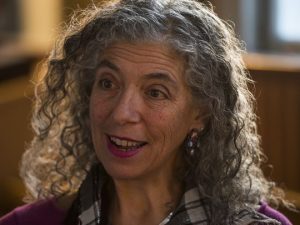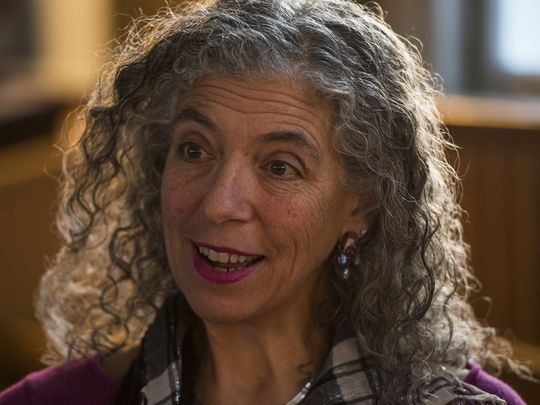Rabbi Jan Salzman

Wisdom/Chochma: We are a new community that has built a presence in the context of Vermont over the 1.5 years we’ve been operating. Most of our families are intermarried and the great outdoors takes precedence over a family’s time (along with music lessons and so much else). I struggle with a foundational question: How am I supposed to transmit Jewish heritage or, more to the point, how can I help folks fall in love with being Jewish?
Some tactics include my own personal charisma, but that will only go so far, and will fall short when it’s time to hand the reigns over to the next rabbi (something that I hope will happen in 5 years or less). So, I ask myself, what do I mean by, “fall in love”? Fall in love with what? A place to begin is when I start with what I call the three noble truths of Judaism, riffing on Reb Zalman’s organicity model: Shabbat, kashrut, and how we read/study texts. Can I help create sacred time? Can I help to imbibe food with kedusha? Can I teach that the next question is more valuable than the previous answer? Can I influence others with the deliciousness of the dissonance? We try to integrate these three themes into all that we do.
Social Justice/Tzedek: We create almost zero solid waste. We purchased silverware at thriftshops and everything can be washed and re-used; we have a compost bucket at every event; we model, through our own behavior, how we can reduce our footprint. On a larger scale, I am involved in Vermont-wide efforts at protecting the planet. Connecting with other faith leaders over these issues strengthens our voices when we approach the state level of legislation.
Community/Kehillah: We find that folks are non-liturgical and most are intermarried, but they show up for events more than they do liturgical services. We had a pot luck, vegetarian 1st night seder that was very successful in our first year of operation. Almost every event involves a pot-luck meal; we provide toys for the kids, who stay in the sanctuary with the grownups, so that there’s no age-based separation. As a new community, with a lot of young people and young families, we are just beginning to develop opportunities for bringing people together outside of the 2x month Kabbalat Shabbat services. And we have begun to plan events that are sponsored by many of the northern Vermont-wide Jewish synagogues/chavurot: a very successful Purim in a local bar last year, which we will do again; a grown-up Chanukah dance (in a local bar..hmmm, you might notice a trend here); and a region-wide Rosh Chodesh Elul is now being planned for this coming August. This collaboration is the growing edge of the Vermont Jewish communities: joining together for celebrations. This raises ‘all of our boats’ back in our home communities, and reduces the impermeable cell walls that can stifle our expansiveness.
Lives of Sacred Purpose/Kedusha: By building opportunities to join together, I and the other Jewish leaders instill (and install) a sense of kedusha. But I’m not sure how to answer this question with specifics, other than assert that everything I do, I do with taxonomy of the Four Worlds of assiyah, yetzirah, briah and atzilut.
______________________________________
Rabbi Jan Salzman received smicha through ALEPH and created Ruach HaMaqom in Burlington, VT in 2016. She has been a long-time Jewish educator and resource person in rural Vermont and is a certified organic farmer.
Is this post useful and interesting? Please consider sharing it with your social networks, and leave a comment below telling us your thoughts!

